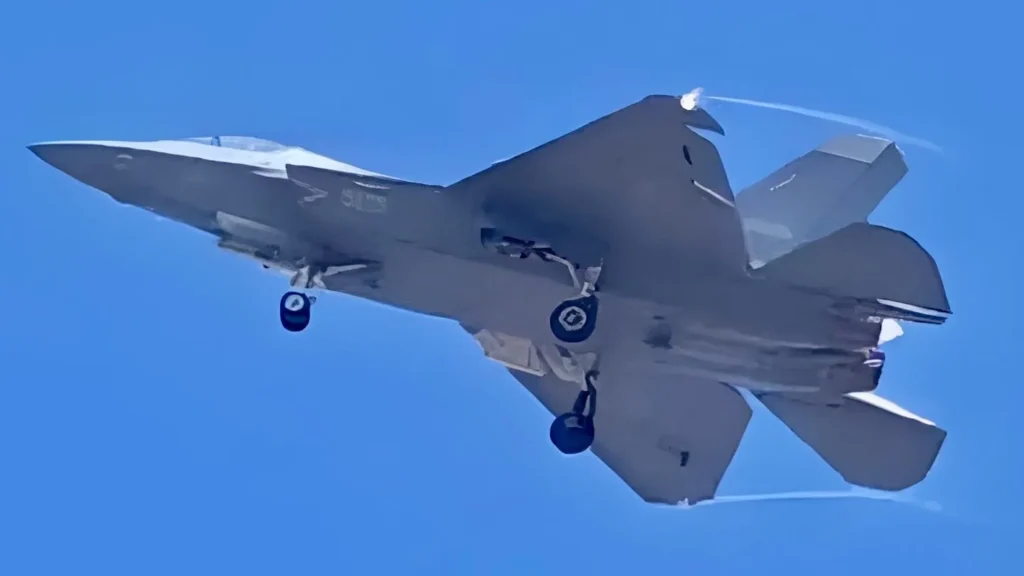
In a significant development that could reshape the defense dynamics in South Asia, China has reportedly agreed to supply 40 fifth-generation fighter jets to Pakistan in the next two years. This move, which has generated a great deal of excitement in Pakistan, is raising serious concerns in India about its national security. Here’s an in-depth look at the implications of this deal and what it means for India’s defense strategy.
The Emerging Threat to India
In the realm of defense technology, fifth-generation fighter jets are considered a major leap forward, incorporating cutting-edge stealth technology, advanced radar systems, and enhanced maneuverability. If Pakistan acquires these fighter jets, it would significantly upgrade its air force capabilities, bringing it closer to India’s defense strength. Currently, India’s most advanced fighter jet is the French-made Rafale, which, while a formidable asset, does not qualify as a fifth-generation jet.
China’s J-35, a fifth-generation stealth fighter jet, is expected to be the centerpiece of this deal with Pakistan. The arrival of these jets would place Pakistan at a technological advantage over India, who has not yet secured a fifth-generation fighter jet for its air force.
Understanding the Importance of Fifth-Generation Fighters
What makes fifth-generation fighter jets so powerful is their stealth capability. Unlike fourth-generation fighter jets, which focus on maneuverability and versatility, fifth-generation jets are designed to evade radar detection. This makes them nearly invisible to enemy radar, allowing them to penetrate hostile airspace and carry out strikes with much higher chances of success.
The J-35, with its stealth features, will give Pakistan a significant edge in any potential conflict. Even though the Rafale is a highly capable fighter jet, it does not possess the same level of stealth capabilities as the J-35, making it easier to detect on radar.
India’s Defense Dilemma
India, with its large defense budget, has long relied on its air superiority to maintain regional stability. However, recent reports show that India’s air force is significantly lagging in terms of squadron strength and technological advancements. As of now, the Indian Air Force operates with only 31 squadrons, a number well below the 42 squadrons deemed necessary for optimal defense capabilities.
The prospect of Pakistan acquiring fifth-generation fighter jets further compounds India’s challenges, especially as the country’s efforts to develop its own fifth-generation aircraft, the Advanced Medium Combat Aircraft (AMCA), are not expected to result in a mass-produced product until 2035.
Given the urgency of the situation, India may have to look at alternative options for procuring fifth-generation jets in the near future. The United States’ F-35 fighter jet and Russia’s Su-57 are two possible contenders that India could consider. However, political and strategic considerations will play a significant role in India’s decision-making process.
The Strategic Implications
The introduction of 40 fifth-generation fighter jets into Pakistan’s arsenal is not just a military concern but a strategic one for India. This deal will not only improve Pakistan’s air capabilities but also put immense pressure on India’s defense budget. India will need to allocate billions of dollars to upgrade its air force in response. The situation has become a balancing act where India’s immediate priority should be to acquire advanced fighter jets or develop its own technology at an accelerated pace.
China’s involvement in arming Pakistan with such advanced technology is a tactical move aimed at hindering India’s progress and maintaining regional dominance. Despite the peaceful rhetoric on the border, China continues to pursue policies that strategically isolate and limit India’s military advancements.
The Path Forward for India
In response to this threat, India must act swiftly. The most realistic option, for now, seems to be acquiring foreign fifth-generation fighter jets. The F-35, widely regarded as the most advanced fighter jet in the world, is one potential option, although it would require significant political negotiation with the United States. On the other hand, the Su-57 from Russia, which has already been tested in combat, is a more viable alternative, especially given the growing defense ties between India and Russia.
India also needs to focus on increasing its defense budget and accelerating the development of indigenous fighter jets like the AMCA. However, with the current timeline, this may not be an immediate solution, and India may have to rely on foreign procurement in the short term.
Conclusion
The decision by China to supply 40 fifth-generation fighter jets to Pakistan is a game-changer for the defense dynamics in South Asia. India’s immediate priority should be to address the growing technological gap by either procuring advanced jets from countries like the United States or Russia or fast-tracking its indigenous AMCA program. The next few years will be crucial for India’s defense strategy as it works to maintain air superiority in the region and counter the emerging threat from Pakistan.
As developments continue, India must remain vigilant and proactive in ensuring that its defense capabilities are not compromised. The stakes are high, and India’s response will define the future of its air defense strategy in an increasingly complex geopolitical landscape.
Also Read: US Sanctions Pakistan Over Missile Development: Here’s Why
Follow US




